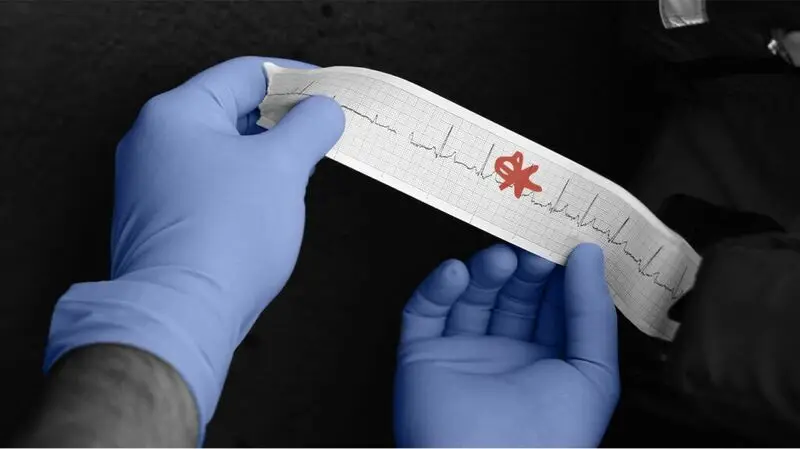
- Previous studies have reported that about 3 million people in the United States have atrial fibrillation (AFib).
- Researchers from the University of California – San Francisco discovered that AFib is three times more common in the U.S. than previously thought.
- Over the course of the study, scientists found that people with AFib tended to be younger, less likely to be female, and more likely to have high blood pressure and diabetes.
Previous studies have reported that about
However, that number may be a lot more than we have thought, says researchers from University of California – San Francisco.
The researchers report their conclusions in their new study, recently published in the Journal of the American College of Cardiology.
Over the last few years, previous research has reported a
While AFib is generally considered a condition for older adults over the age of 60, studies have reported an increase of AFib occurring in people at a
“Atrial fibrillation is a major contributor to the burden of disease, especially in elderly,” Jean Jacques Noubiap, MD, PhD, a postdoctoral scholar at the University of California – San Francisco with a specialty in global cardiovascular health and first author of this study told Medical News Today.
“However, prevalence estimates of atrial fibrillation from large populations had not been updated for more than 2 decades,” he added.
“Atrial fibrillation substantially increases the risks of
For this study, Noubiap and his team analyzed data from almost 30 million adult patients who had received some type of acute or procedural care in California from 2005 to 2019.
Of those study participants, about 2 million of them received an AFib diagnosis with the numbers increasing over time from 4.49% of participants treated between 2005 and 2009, to 6.82% receiving treatment between 2015 to 2019.
After standardizing this data for the entire U.S., researchers estimated that the current AFib prevalence nationwide is at least 10.55 million or about 5% of the population, which is three times more than previously thought.
Researchers also found that during the course of their study, people with AFib tended to be of a younger age, less likely to be female, and more likely to have high blood pressure and diabetes.
“Our findings are not very surprising,” Noubiap said. “They reflect what we see in clinical practice, an increasing number of patients who have atrial fibrillation. Previous studies suggested that there would [be] a rise in the number of people with atrial fibrillation. However, our data objectively demonstrate that prior projections severely underestimated the true prevalence of atrial fibrillation in U.S. adults.”
The scientists also discovered that over the length of the study’s time frame, participants with AFib skewed younger, were less likely to be female, and were more likely to have high blood pressure and diabetes.
As to why that may be the case, Noubiap explained that:
“It is likely that atrial fibrillation is diagnosed earlier due to enhanced detection. Increased healthcare utilization among females or patients with various comorbidities such as hypertension and diabetes might heighten their likelihood of having atrial fibrillation diagnosed during their healthcare encounters.”
However, “[t]he most important driver [for AFib] is population aging,” he noted.
“In fact, increasing age is the strongest risk factor for atrial fibrillation,” said Noubiap. ”Furthermore, enhanced atrial fibrillation detection and improved survival of affected patients also result in [an] increased number of cases.”
”Finally,” he added, ”the rise in common risk factors for atrial fibrillation, such as hypertension, obesity, or diabetes might partly explain the increasing prevalence of atrial fibrillation.”
After reviewing this study, Nikhil Warrier, MD, a board-certified cardiac electrophysiologist and medical director of electrophysiology at MemorialCare Heart & Vascular Institute at Orange Coast Medical Center in Fountain Valley, CA, told MNT that the authors should be commended as it shows a glimpse into what we see in our day-to-day patient encounters.
“Namely, increased diagnosis of AFib in younger patients with significant comorbidities,” Warrier continued. “I suspect that the prevalence is higher — improved accuracy from wearable devices will likely [lead] to earlier diagnosis, which will continue to increase the volume of patients seeking care.”
While “it is deeply concerning to see an increased prevalence of AFib in younger patients but known risk factors such as
“Successful programs are great at addressing these risk factors which lead to improved clinical outcomes for all patients,” Said Warrier.
MNT also spoke with Yuriy Dudiy, MD, surgical director and the Adult ECMO Program in the Department of Cardiac Surgery at Hackensack University Medical Center in New Jersey, about this study.
“The study reveals a significant rise in A-fib cases, exceeding prior estimates,” Dudiy, who was also not involved in this research, told us. “This conservative figure excludes diagnoses from ambulatory clinics and likely undetected AFib, making the issue even more pressing.”
In his opinion:
“This is a wake-up call for the medical community, policymakers, and the public. Policymakers need to address AFib as a major public health concern and allocate resources, especially since younger patients are increasingly affected, leading to higher long-term healthcare costs. Medical community must prioritize prevention, early detection, and effective management of AFib to ensure a healthier future and reduce the burden on the healthcare system.”
For those looking to lower their risk for AFib, Warrier said that the adage “prevention is better than the cure” applies here, and Dudiy commented that preventing AFib can be more manageable with some simple lifestyle changes and healthy habits.
To help lower a person’s AFib risk, recommendations from both doctors include:
- following a balanced diet rich in fruits, vegetables, whole grains, and lean proteins, while avoiding excessive sugar, salt, and unhealthy fats
- improving hypertension control through medications/diet
- cutting down on alcohol and caffeine consumption
- quitting smoking
- incorporating at least 30 minutes of moderate-intensity exercise daily
- managing stress through relaxation techniques like deep breathing, meditation, or yoga
- getting 7 to 9 hours of quality sleep each night
- monitoring heart health, especially if the person has a family history of AFib or other heart conditions
- staying hydrated by drinking plenty of water.





